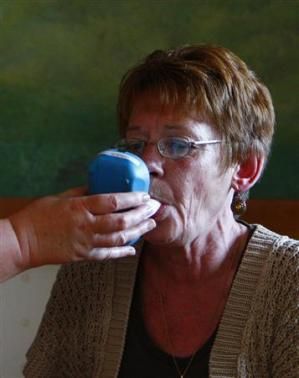Smartphone And Electronic Nose Detect Life-Threatening Diseases

The smartphone continues to evolve with better features other than tracking fitness and vital signs. A recent project developed by scientists at the Technion-Israel Institute of Technology enables a mobile phone and breathalyser screening technology to detect deadly diseases. The Sniffphone creation by a consortium, led by Professor Hossam Haick, received a €6-million (US$6.8-million) funding from the European Commission.
Disease-detection using the Sniffphone will be fast, inexpensive and non-invasive. The technology has micro and nano sensors that could analyse human breath. A smartphone attached to these sensors transmits gathered information to a processor for interpretation. Statistics are evaluated for establishing accurate diagnosis of health condition or presence of a disease. This useful innovation would provide the general public another alternative for preliminary detection of any illness to pursue immediate intervention. Haick, chief scientist officer for the project, said, "Early diagnosis can save lives, particularly in life-threatening diseases such as cancer."
Haick started developing the breathalyser technology in 2006 when he joined the Technion. He is a member of the Faculty of Chemical Engineering and does research at the Russell Berrie Nanotechnology Institute, both at the Technion. His work on this particular "electronic nose" is acclaimed by the science community. The Nanoscale Artificial Nose (NANOSE) was developed to use breath analysis to detect internal diseases such as cancer, cardiovascular problems, renal and neurodegenerative diseases. The research consortium for the Sniffphone project includes companies such as Siemens and the Technion spin-off NanoVation-GS Israel. Research institutes and universities in Austria, Finland, Germany, Ireland and Latvia have also contributed to this development.
The use of odour recognition to detect illnesses started in the 1980s, but the technology then could not provide reliable diagnoses. The current generation of electric noses (E-nose), however, have demonstrated accuracy in identifying certain diseases such as cancer and tuberculosis. For example, the model for TB diagnoses was created by scientists at the International Centre for Genetic Engineering and Biotechnology in India, and Next Dimension Technologies in California USA. Other institutes like NASA technology and Owlstone are also developing sensors for disease detection. These new inventions could enhance preventive medicine and offer people comfortable and affordable screening even before clinical symptoms arise.
To send feedback about the content, email: j.panganiban@ibtimes.com.au





















